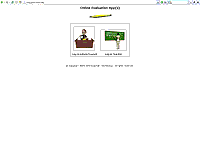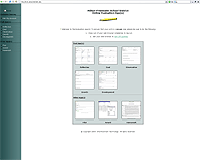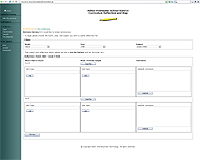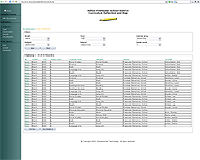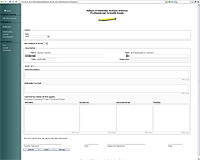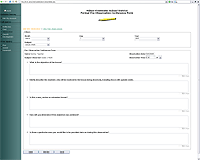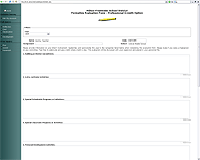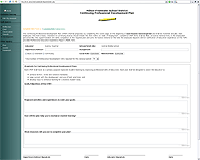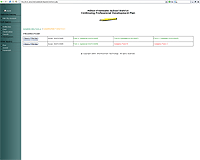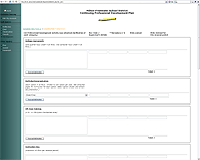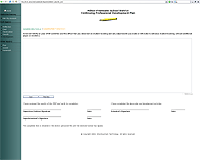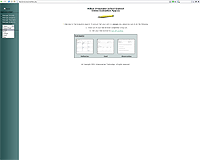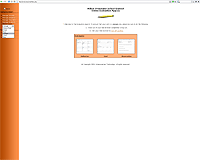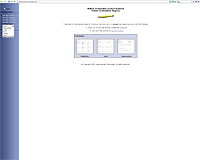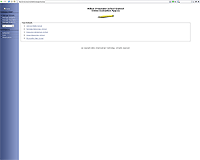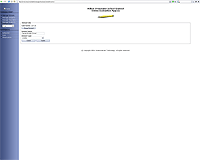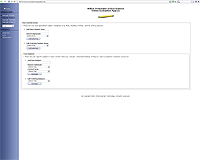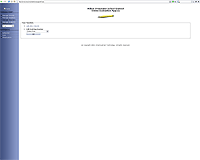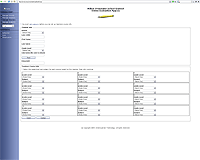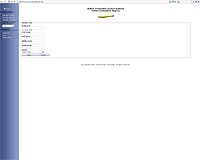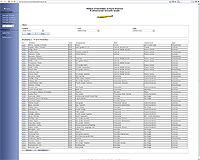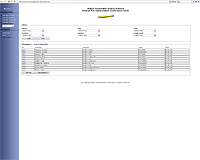Description
This application consists of several modules that provide a secure means for teachers to build, store, share, and reference their evaluative portfolio. It acts as a communication tool between teachers and supervisors throughout the district. It is a single application that can be used by multiple school districts and implemented district wide. The four accounts/roles in the program are as follows: District Admin, School Admin, Committee, and Teacher.
Once set up, the District Admin can set up teacher accounts, district styles, students, courses, etc. The School Admin can perform a variety of these tasks as well. The difference is simply that District Admin can modify items that effect the entire district (e.g. attach a course to every school) where as the School Admin can only modify items that effect their specific school (e.g. add a course to their school only). Along with that, comes viewing privileges. District Admin can view teacherís data throughout the district and School Admin can only view their teacherís data. Committee access is granted to a Reflection Committee who has access to the Reflection Module only.
Reflection Module
(Teacher/District Admin/School Admin/Committee has access)This module provides the teacher with a curriculum mapping tool to compare how their curriculum measures up to other teachers in the district. It also will help them and others analyze how well they are in fact reaching their personal curriculum plan for a given month. They enter what they plan to teach at the month beginning and then what they actually taught at month end. Each teacher, administrator, and committee member can view curriculum maps throughout the district. Teachers can then use this information to reflect on their own curriculum map. Teachers may remain anonymous if they wish.
Goal Module
(Teacher/District Admin/School Admin has access)Yearly goals can be submitted and referenced using this module. The teacher selects the number of goals they wish to set and provides a description, rationale, activities, resources, documentation, and timeline for each. These goals can then be viewed, searched, and sorted by school and district administrators as they see fit.
Observation Module
(Teacher/District Admin/School Admin has access)The Observation Module helps the teacher communicate with their supervisor when they need to have him/her sit in on one of their classes. The teacher completes a form providing their supervisor with the objective, student description, type of lesson, plan of action, and improvement area. The supervisor can then access these forms online, print them out, and bring them with to refer to during their observation. Teachers and supervisors can also reference observation requests made in the past if they need to refer to them.
Growth Module
(Teacher Only)Professional growth goals consist of specific commitments to improve performance with the district, a school, or a classroom. This module is similar to the Goal Module, but it allows the teacher to track expanded information. Specifically, they can submit which committees they are involved with, extra-curricular activities, special school wide programs or initiatives, special classroom programs or activities, personal development activities, professional development activities, community involvement, wish lists, areas they take pride in, and other reflections.
Development Module
(Teacher Only)This is a three form module that helps the teacher document their Continuing Professional Development Plan (CPDP) and present it to their supervisor during the license renewal period. The forms are as follows:
Form A allows the teacher to indicate which type of license they are acquiring and the number of Professional Development Units (PDUís) that are required of them. They will also submit the goals/objectives of the CPDP, their proposed activities and experiences to meet these goals, how they plan to enhance student learning, and what resources they will use to implement this plan.
Form B contains the list of professional development activities that the teacher plans to carry out in order to meet their PDU requirement. They can choose any of the following categories to build up their PDU count:
- College Coursework
- Portfolio/Documentation
- Off-Hour Training
- Curriculum Day
- Outside Training
- Committee Work
- Unique Program
- Professional Activities
Form C allows the teacher to reflect on their professional development process and activities. They can also indicate the effect that they observed to have on student learning and any adjustments they made or will make to enhance student learning.
Once the three forms are completed they will be stored for future reference and can be printed out simultaneously and provided to the administration.
Completion Date
March 8th, 2005
